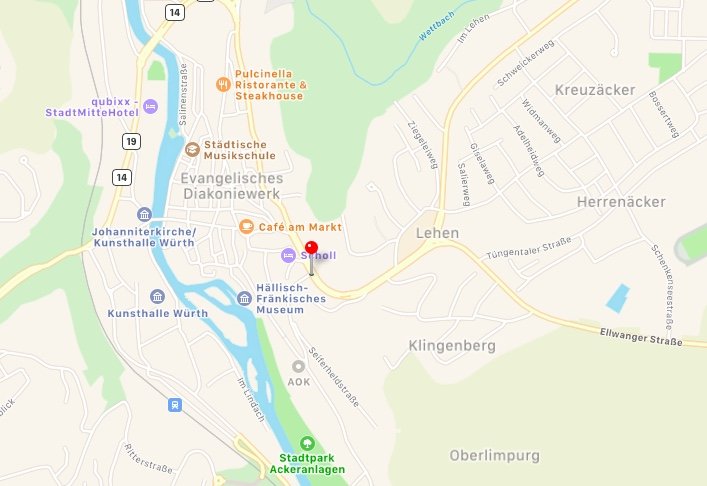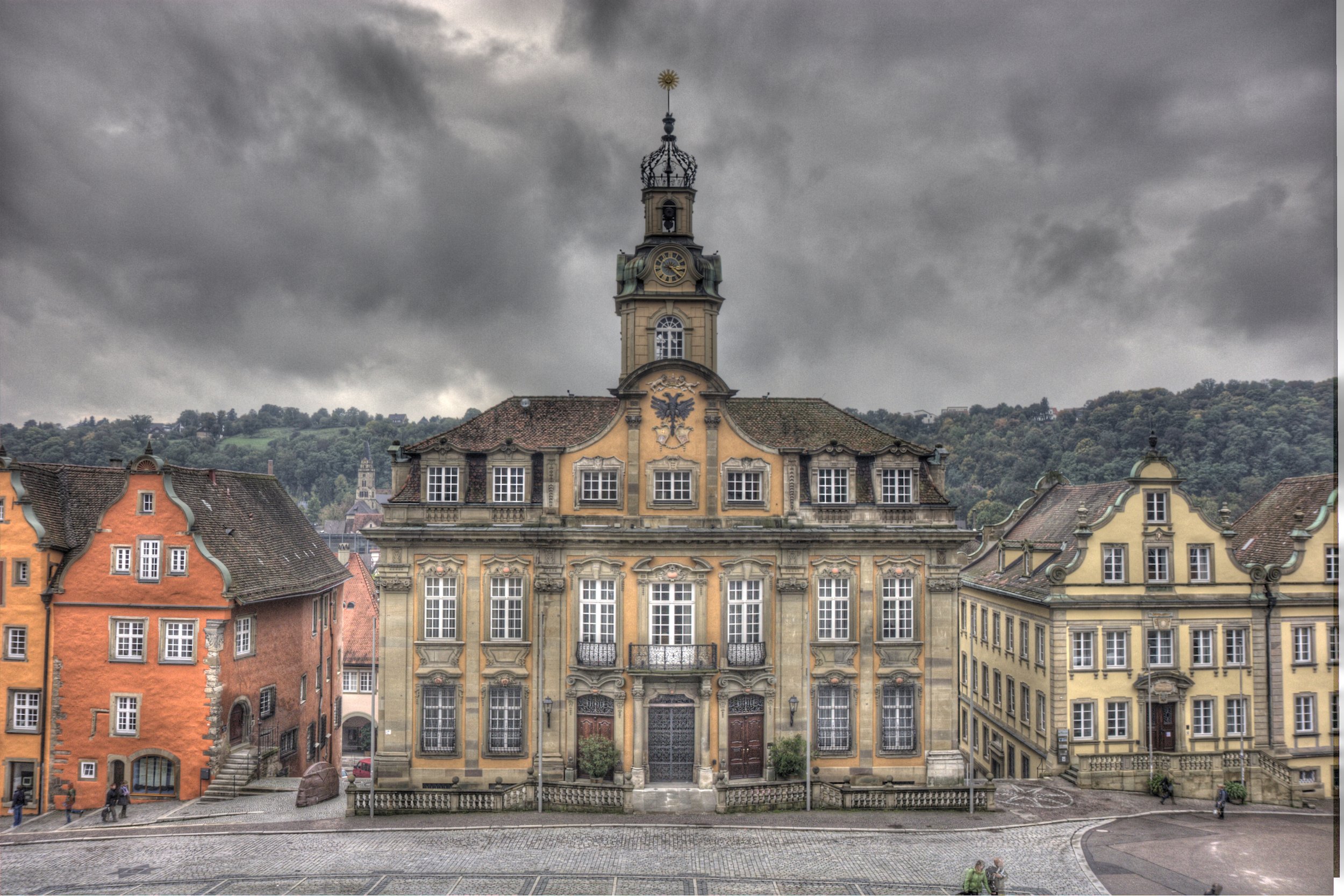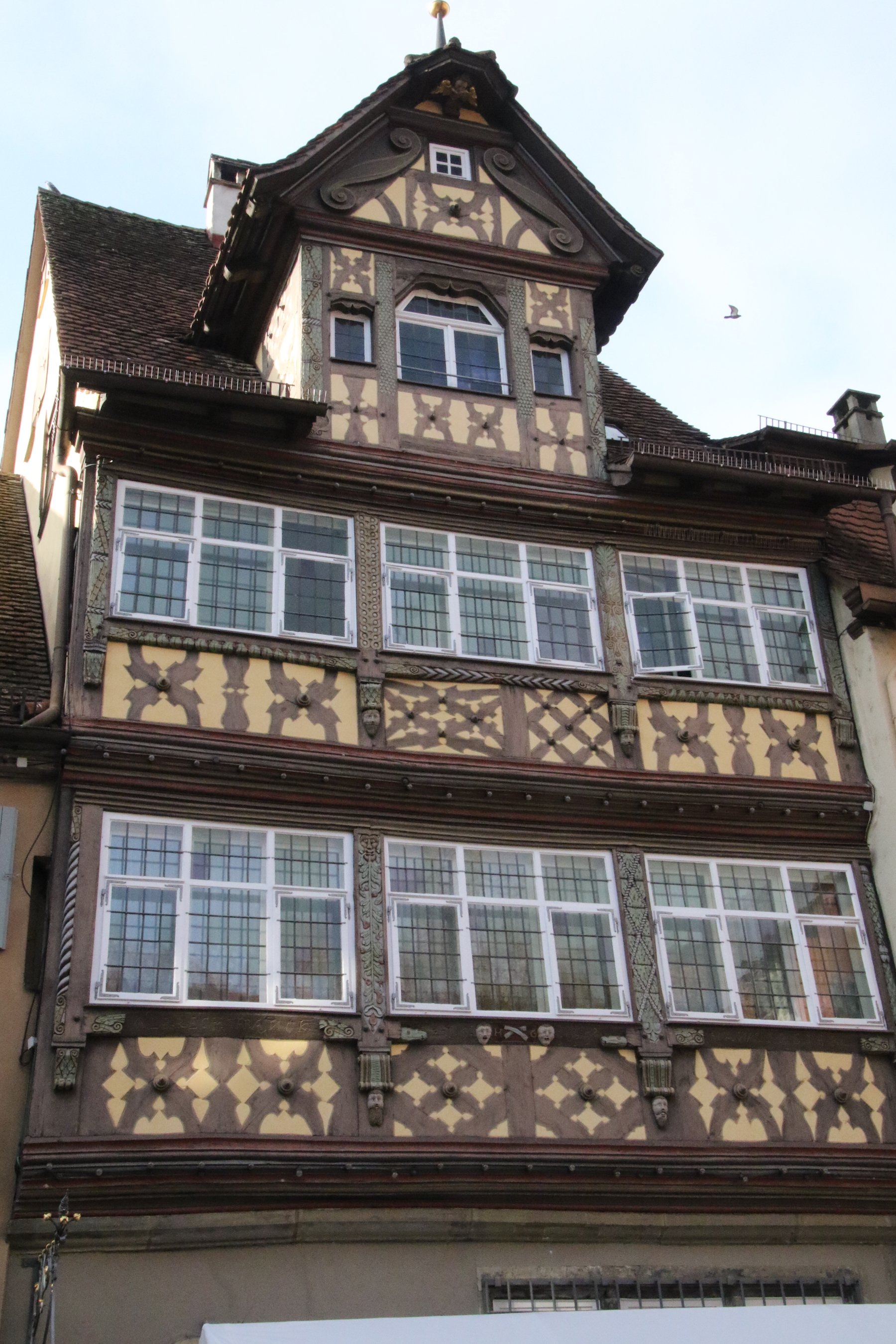The ancient town was founded to process brine
from a naturally-occurring spring to salt to trade.

Midway between Frankfurt & Münich, most of Hall is on the right bank of the Kocher River.

The Baroque Rathaus

Plays take place on the steps of St Michaels
This is the town that a Salt Spring built. Archaeology has discovered signs of saltworks dating to about 250 BC. Due to limited excavations, it is not clear if the early Celtic occupation morphed with in-coming tribes or if a landslide covered the spring. Medieval lore dates the “discovery” of the saline spring to the 9th century. First mentioned in a document of 1037, the main church of the town, St Michaels, was consecrated in 1156. By the early 1300s, the salt spring was treated as private property, operated by a closed group with ownership divided into 111 units (called pans). As the laborious work of chopping trees for firework, carry saltwater from the spring to large iron pans, maintaining the “Haal House” and stoking the fire to boil off water to recover & purify the salt grew expensive & tiresome to the monasteries and nobles who owned the rights; gradually starting in the 1400s, they transferred the property to specialized workers, called Salzsieder. By the 1500s, a group of 40 families had accumulated ownership of 50% of the saline. Salt sales to the left bank of the Rhine resulted in return trips laden with wine to sell; which made many of these families very wealthy. The town’s height of importance as an Imperial City (not subject to the Duke of Württemberg) ended with the 30 Years War. Later when, Napoleon’s conquests re-drew the structure of many German states, Hall was forcibly occupied by the King of Württemberg. He confiscated the saltworks but was unable to operate it. A settlement treaty resulted in a eternal pension to the Salzsieder (unfortunately not indexed for inflation). My Salzsieder relatives in Germany still receive a very modest annual pension!

Upon leaving the Train station you head down the left bank and see St Michaels across the river.

St Michaels dominates the town square and faces the Rathaus

Adjacent to the Rathaus are 13th century buildings. The reddish-orange building houses the archives

Note the 10 Ft tall wall on the branch of the Kocher.
In ancient times, the salt springs (referred in early documents as the wallow spring) was likely a muddy puddle trickling salt water along the bank of the Kocher. The prevent spring rains flooding the town, medieval workers channelized the Kocher with 10 foot tall stone walls. This left the salt spring 10 feet below grade allowing the dilution of the saline by rain runoff (what they called Wildwasser). Typical salt concentration was 5%; the process became uneconomical below 3%.

Walking into the entrance to the Gelinger Gasse neighborhood

The Gräter House

Gasthaus Der Clown, operated as a Guesthouse in the 1570s by Peter Firnhaber

In 1680 a fire devastated Gelbingen

The Fish Fountain adjacent to the town square

One of the oldest houses on the south side of town

View across the Kocher looking at St Johann church

Period painting showing the devastation from the 1728 fire. The entire Haal area was destroyed.